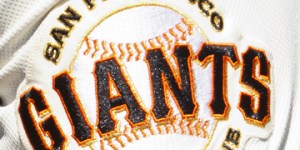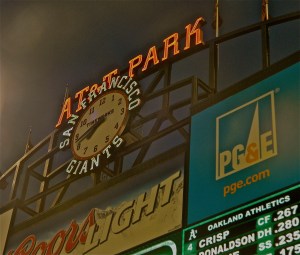As the Giants ownership and team management look beyond their historically dismal 2017 season, what is the expectation for 2018 and beyond?

So there will be no two or three-year rebuilding plan to reset the problems of an aging 25-man roster that has under-performed for the past three years, an empty farm system that can’t provide Major League-ready talent, and an organization lost in the dust of the analytic revolution.
With the 2017 non-waiver trade deadline approaching the Giants are floundering, unable to fully commit to selling or buying.
And if they are buying or selling, what does San Francisco use as currency?
Teams with a surplus of exceptional Major League players and talented prospects (like the Houston Astros, Chicago Cubs, and New York Yankees) have what other teams want in a trade partner.
Other than several “untouchables”, what the Giants have to offer are players like Hunter Pence and Eduardo Nunez who will only bring the Giants more of what they already have: mediocre prospects and league average (or less) starters.
What is the Level of the Giants’ Organizational Talent?
Baseball America has long established their expertise in assessing, projecting and rating the organizational talent of every Major League team. Also doing excellent work in this area are Baseball Prospectus and ESPN’s Keith Law.
In Baseball America’s 2017 MLB Organizational Talent Ratings the Giants were listed 24th out of 30 MLB teams.
The previous six years were also terrible: in 2016 the Giants were 19th; in 2015 26th; in 2014 19th; in 2013 28th; in 2012 21st ; and 23rd in 2011.

Baseball Prospectus also has the 2017 Giants organization rated 24th.
Keith Law has San Francisco’s farm system at about the same over the last seven years (although he had them at 29th of 30 teams in 2015).
All of which demonstrates the following: either through neglect or mismanagement, the San Francisco Giants have created long-term damage to a critical part of their franchise.
It’s the part that drafts, develops and advances talented young players to the Major Leagues—either to play for the Giants, or as quality trade pieces to acquire players to play for the Giants.
Three common objections are often brought up to counter this.
The first is the “You never know which draft picks or minor league prospects are going to develop into valuable players. A lot of guys drafted in later rounds of the draft turn out to be good.”
Which is simply not true.
Each year amateur players are number-rated by every team and by the sports media—the research is exhaustive and amazingly accurate. Turns out, players are listed in the top 100 of the draft for a reason.
Are there anecdotal exceptions? Sure, but don’t bet your farm system on it.
As far as minor league players, twenty years ago Bill James demonstrated (by actually doing the research) that a prospect’s performance in the minors is almost always directly predictive of their performance in the Majors.
Which brings up the second objection, often heard from fans who don’t follow the game closely. “Well, the Giants went through a period when they won a lot and because of that they didn’t get high draft picks. No wonder their farm system is so bad.”
Doing just a little research shows this to be not true.
When the Giants were doing their postseason runs a number of years ago there were teams with win/loss records as good or better than the Giants.
At the time, St. Louis, Tampa Bay, Boston, the Dodgers (to name several) all had win/loss records on a par (or better) than the Giants.

It’s not where you pick in the annual amateur draft, it’s who you pick. Which is about having a smart team of analysts and scouts who can take the 28th pick in the draft, or the 88th pick, and find quality prospects.
The last objection is often heard from sincere Giant fans. “If the Giants farm system is so bad, what about Madison Bumgarner, Buster Posey, Brandon Crawford, and Brandon Belt? Seems like they’ve developed a lot of great players….”
You can take the worst-rated farm system in baseball, sift through their 25-man rosters over a number of seasons and find some home-grown players who performed well.
But think about this. From the 2002 MLB amateur draft (when the Giants chose RHP Matt Cain with the 25th pick) through the 2015 draft, the San Francisco Giants drafted a total of 661 players.
The number of players drafted by the Giants who made the big club from those drafts, and made significant contributions, is ridiculously small. That’s why Giant fans can easily name each of them.
Certainly there’s no expectation that anywhere near even half of players picked in the annual draft will get to the big leagues. In fact, Baseball America estimates that on average 17.2% (1 in 6) of all drafted players ever make it to the Major Leagues. Obviously how long they stay there is dependent on performance.
The San Francisco Giants’ broken farm system, which should be a significant franchise resource, has instead chronically under-produced impact players for the big-league team and left the Giants with virtually nothing of value to trade every season.
How Can the Giants Get Better Quicker?
The one way the San Francisco Giants can become more competitive in the near future is to go heavily into the 2017-18 and 2018-19 off-season free agent pools. The list of potential All Star quality players available in those upcoming free agent periods is historic and breathtaking.
And all it takes is money. A lot of money. Which the Giants, as the 5th most valuable franchise in Major League Baseball, have by the boatload.
But there are issues with trying to upgrade with free agents. They tend to be older and can be a one-dimensional fix. And that works if you are the Houston Astros and maybe need one starter; or if you’re the Washington Nationals and need a closer; or the New York Yankees, and you might upgrade at third or first base.
Ideally, impact free agents are best used to complement an already solid franchise with an already strong 40-man roster.
The Giants are looking at a multitude of basic needs: from the bullpen, to the outfield, to starting pitching, to finding some power hitters.
As a result, two or even three free agent signings likely won’t be enough for San Francisco to contend in the NL West over next several seasons given how competitive the Dodgers, Arizona, Colorado, and (eventually) San Diego will be.
OK Smart Guy, So What’s the Answer?
The real answer is the one Giants management has already said just can’t happen.
First, find a dynamic and talented General Manager and let that person build their own front office team.
Then ensure that the people responsible for re-building the farm system, overseeing the player development side, and directing the amateur player draft are analytically competent and have all the resources they need to get those jobs done.
Then recast this storied franchise into a true championship organization. Which means a dreaded “rebuild”. Or, do what the Yankees just did– a semi-rebuild.
The San Francisco Giants have already demonstrated they are marketing experts. They are more than capable of guiding their fanbase through a successful rebuild; it would be a great opportunity to conduct all kinds of creative promotions to create buy-in and ensure fan engagement the whole way.
They just have to commit to doing it.
Add The Sports Daily to your Google News Feed!
